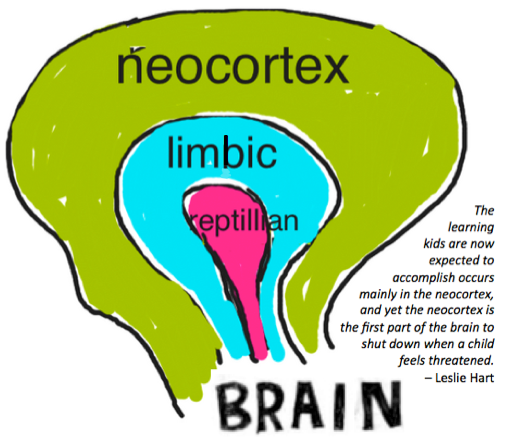neocortex preference: not threatened

While most children, writes Hart, can still manage the rote memorization that has become the mainstay of classrooms, the deeper levels of learning – pattern recognition, oral and written language development, and symbolic reasoning – depend on the full participation of the neocortex, which occurs only when a child feels secure. p. 28
95% of all learning occurs spontaneously, through play, fantasy, and experimentation, what I (Chris) – call wild learning. Only 5% of our knowledge – in our lifetime – is acquired through formal instruction, and of that 5%, we remember only 3-5% for any significant length of time. There is a model imperative – wild learning needs to be modeled by others – but it can be anywhere, by anyone, at anytime. p. 32
– Chris Mercogliano, In Defense of Childhood
_____________________
spaces that people don’t feel threatened?

spaces of permission – where people have nothing to prove.
________________
________________
http://readandgetrich.com/the-big-4-navy-seals-technique-conquering-fear-panic/
_______________
http://neurosciencenews.com/stress-learning-senses-5942/
________________
lots in Gabor Maté‘s scattered .. just leaving this for now
83
emotional stress particularly affects the chemistry of the prefrontal cortex the center for selective attention, motivation and self-regulation..
both endorphins an dopamine promote the development of new connections in the prefrontal cortex.. (ie: from perfectly attuned mother-child mutual gaze interaction)
the letters add may equally well stand for attunement deficit disorder
_________________
Fun fact about your stressed-out brain: In an effort to save energy and cognitive resources, it leans on old habits and routines over purposeful, deliberative action. https://t.co/QdMmNqOKMQ
Original Tweet: https://twitter.com/Medium/status/1318147508200230914
_________________


















